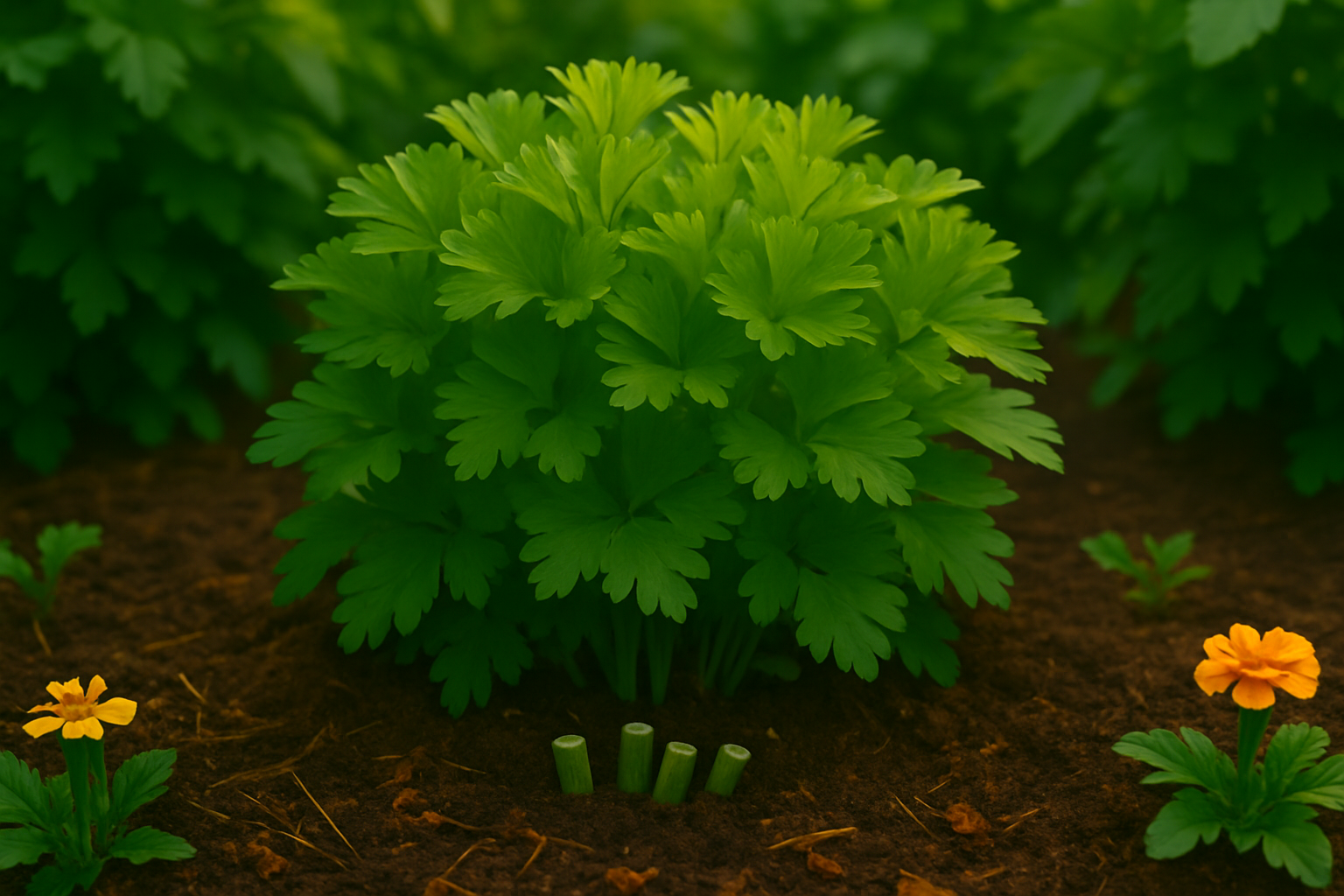Why Pruning Parsley Matters for Bigger Harvests
Pruning parsley isn’t just about keeping your herb garden tidy—it’s the key to lush, productive plants and a steady supply of fresh leaves. By snipping entire stems close to the base, rather than pulling off single leaves, you encourage your parsley to send out new shoots from the crown. This targeted pruning method helps the plant grow bushier and develop more foliage, instead of becoming lanky or sparse.
Regular pruning also staves off bolting, which is when parsley starts to flower and goes to seed, ending its leaf production prematurely. When parsley isn’t pruned and becomes overcrowded or old, it focuses its energy on developing flowers or tough, bitter leaves instead of those tender, flavorful ones you want for the kitchen.
By harvesting outer stems every week or two, you not only get a more continuous harvest but also boost the plant’s vitality, since constant regrowth keeps it in a vegetative, leaf-producing state. This is much more effective than just picking leaves from the top or center, which can leave the plant uneven and stressed.
Gardeners who stick to a regular pruning schedule often find their parsley plants thrive for months, sometimes even into the next season, yielding generous bunches for every salad, soup, or garnish. Consider pruning a win-win: your parsley looks better, tastes better, and rewards you with a bigger, longer-lasting harvest.
When Is the Best Time to Prune Parsley?
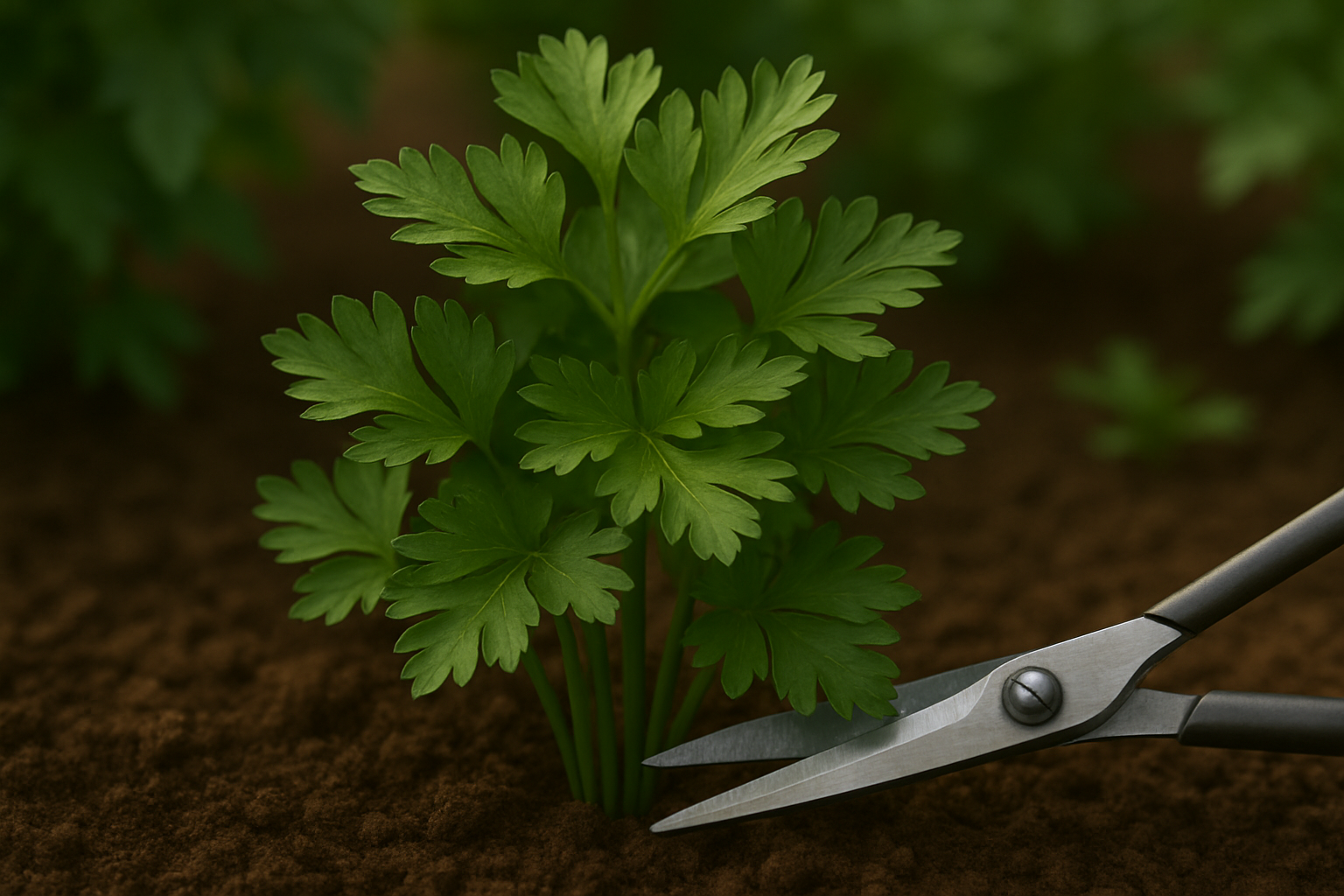
The best time for your parsley’s first major prune is when the plant has grown at least three sets of healthy, vibrant leaves—usually about six to eight weeks after planting. This gives the plant time to establish strong roots and leaf growth before you start cutting, which reduces stress and encourages fuller, bushier regrowth.
Throughout the growing season, aim to snip parsley every two to three weeks, or whenever you notice new, robust leaf clusters. Regular pruning prevents the plant from becoming leggy or going to seed prematurely and promotes continuous harvests of fresh, tender leaves.
Pay attention to environmental cues: prune when leaves start yellowing or when older stems become tough—removing these helps direct the plant’s energy toward new growth. Look for parsley that’s about six inches tall with a dense, green appearance as a sign it’s ready for trimming.
Be sure to cut stems near the base rather than just snipping off the tops to stimulate healthy, productive shoots. By monitoring leaf color, plant size, and overall vigor, you’ll know exactly when and how much to prune, ensuring a thriving parsley patch all season long.
Tools and Preparation for Pruning Parsley
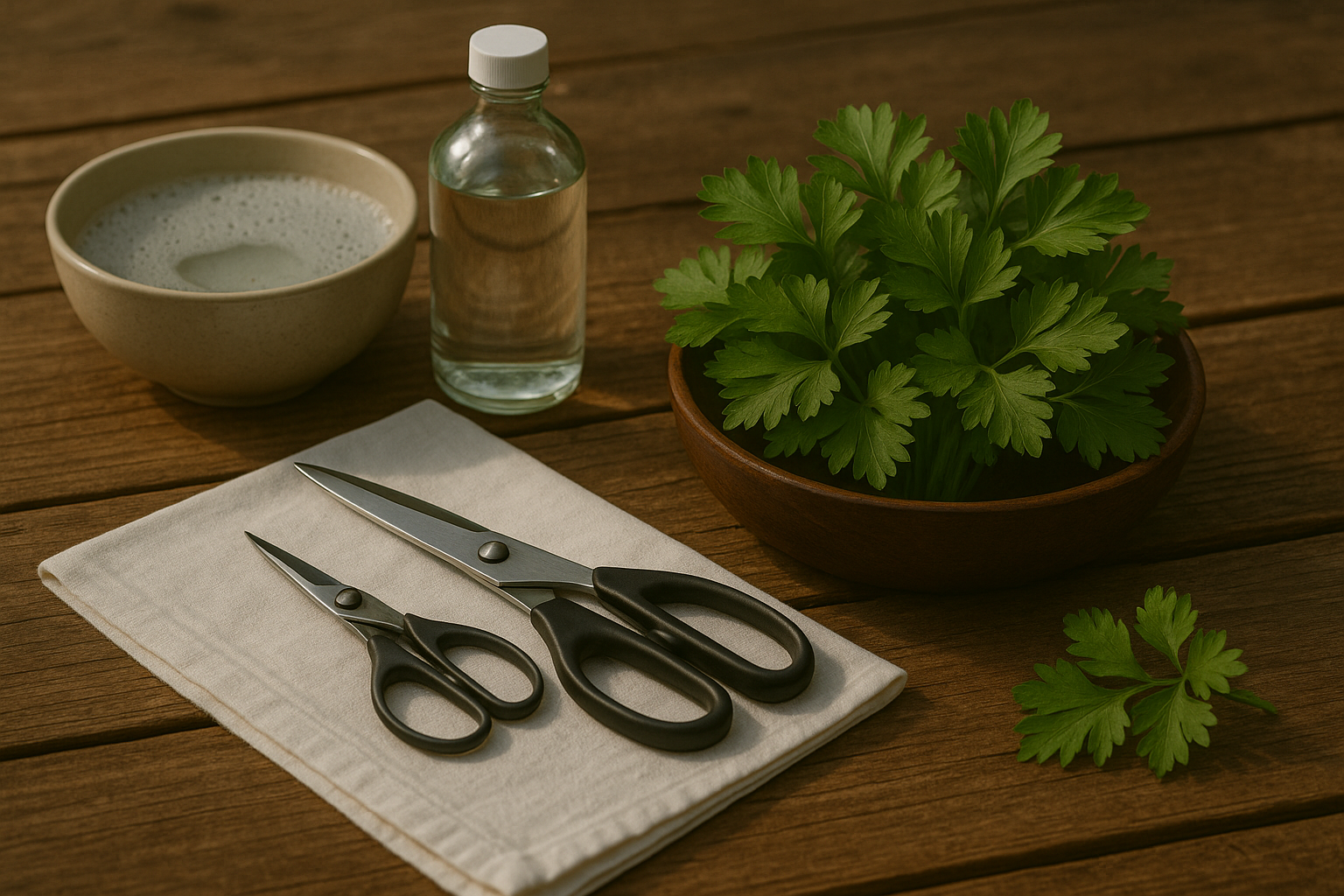
When pruning parsley, having the right tools makes all the difference. Sharp kitchen scissors or small gardening snips are ideal, but even clean fingers can work for pinching off delicate stems. The most important thing is to make clean cuts, not jagged ones—this helps the parsley recover quickly and reduces the risk of disease.
Before you start, always clean your tools with warm soapy water, then wipe them down with rubbing alcohol or a diluted bleach solution (one part bleach to nine parts water) to kill any lingering pathogens. This simple step prevents accidentally spreading bacteria or fungi between plants. Don’t forget to wash your hands if you’re harvesting by hand.
A key preparatory tip is to water your parsley thoroughly a few hours before pruning. Well-hydrated plants are less likely to go into shock, making it easier for them to bounce back and keep growing. Whether you’re collecting a handful of leaves for a recipe or shaping your plant for healthy growth, taking these extra steps ensures your parsley stays productive and disease-free all season.
Step-by-Step Guide
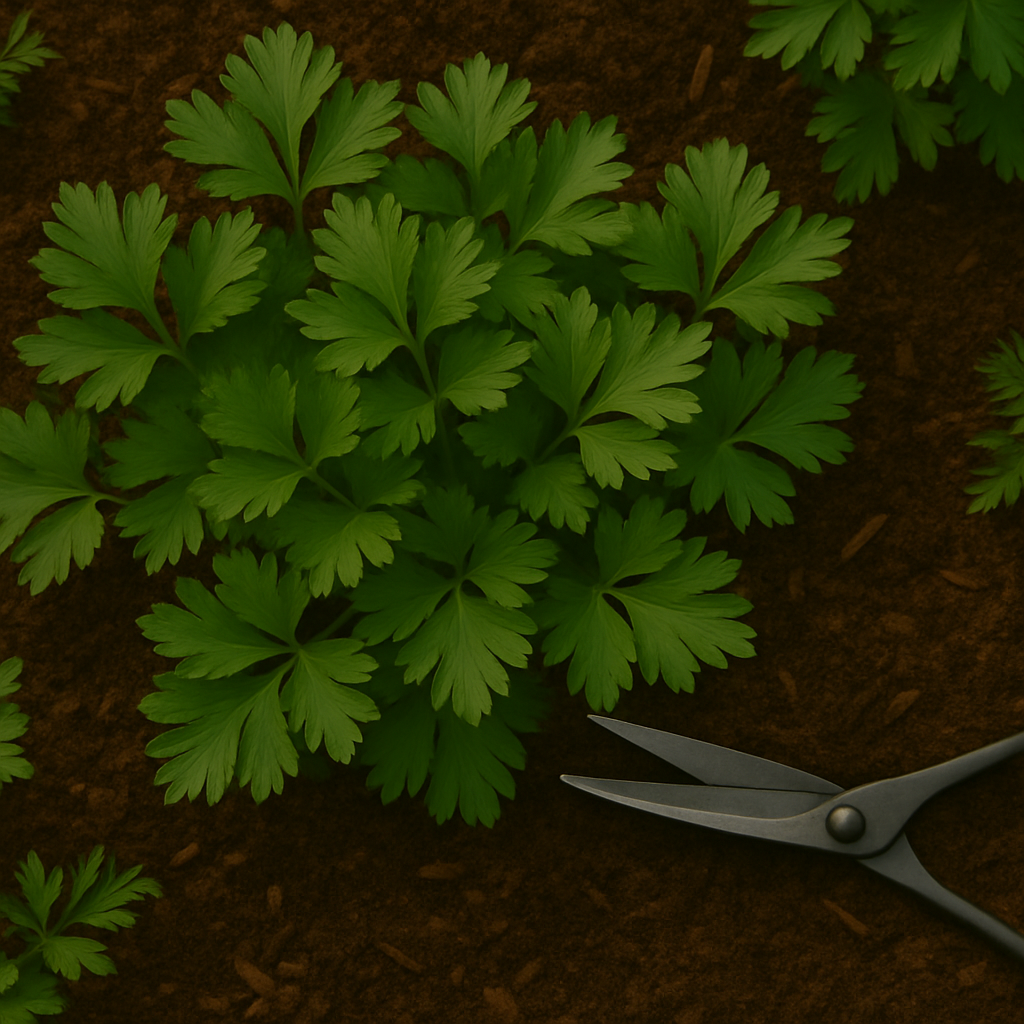
Pruning parsley the right way can make all the difference in how lush and productive your plant stays throughout the growing season. Start by identifying the outermost stems—these are usually longer, darker green, and have fully developed leaves.
Using clean, sharp scissors or garden snips, cut these mature stems down at the base where they meet the main plant, leaving about half an inch to avoid damaging the crown. Always avoid cutting the youngest shoots in the center, as these inner stems will continue growing and help the plant regenerate.
Harvesting the outer stems first not only encourages more leaves to sprout from the middle but also keeps the plant looking tidy and shapely. As you work, rotate the plant and take stems evenly from all sides to maintain a balanced, bushy shape rather than letting it get leggy or lopsided.
Be mindful not to remove more than one-third of the plant at a time—a common mistake that can shock parsley and slow its regrowth. Likewise, avoid snipping too close to the center, as this can injure young shoots and reduce future yield.
After pruning, give the plant a little water and, if it’s in a pot, rotate it so all sides get sunlight evenly. Regular but gentle pruning every couple of weeks keeps parsley thriving, providing you with a constant supply of fresh, flavorful leaves while also keeping your herb bed attractive and vibrant.
Caring for Parsley After Pruning
After pruning parsley, proper aftercare is essential to keep the plant healthy and productive. Start by watering consistently, aiming to keep the soil evenly moist but not soggy—parsley’s roots can rot if the soil is too wet. In hot or dry weather, check the soil moisture daily and water early in the morning to reduce evaporation.
Apply a thin layer of organic mulch, such as straw or shredded leaves, around the base of the plant to retain moisture, suppress weeds, and keep the roots cool. If your parsley looks sluggish after pruning, a light feeding with a balanced liquid fertilizer can help kickstart growth. Be sure to dilute the fertilizer to half-strength to avoid overfeeding.
Since parsley’s tender new shoots are more vulnerable to pests like aphids and slugs after cutting, check the leaves regularly. Remove unwanted visitors by hand or use gentle organic controls if needed. To protect your plants during heatwaves or cold snaps, consider draping a lightweight row cover over them, especially if frost is expected.
For rapid regrowth, never cut the stems all the way down—always leave several healthy leaves behind so the plant can continue producing energy. With these simple steps, your parsley will bounce back quickly, providing you with lush greens for many more harvests.
Troubleshooting Common Parsley Pruning Problems
Parsley growers often face issues with pruning, but most problems are easy to identify and fix. If you’ve over-pruned, leaving just a few stems, your parsley may struggle with weak regrowth—look for thin, spindly shoots and slow new leaf growth. To remedy this, avoid pruning more than one-third of the plant at a time and allow it to rest to regain strength.
Under-pruned parsley, by contrast, becomes bushy with yellowing or crowded leaves. Simply trim back the older outer leaves to improve air circulation and light exposure.
If you notice sudden tall stalks and yellowing after pruning, your parsley is probably bolting, often caused by hot weather or harsh cutting. Remove flower stalks quickly and mulch around the roots to keep the soil cool.
Yellow, wilted leaves or black spots can indicate stress or disease introduced through pruning tools. Always use clean, sharp scissors and prune during dry weather to prevent infection.
If your parsley looks tired after trimming, give it a nutrient boost with a diluted liquid fertilizer and water well at the soil line.
With careful, regular pruning and gentle post-trim care, most parsley plants bounce back quickly and produce lush, healthy leaves.
Harvesting and Storing Parsley for Maximum Freshness
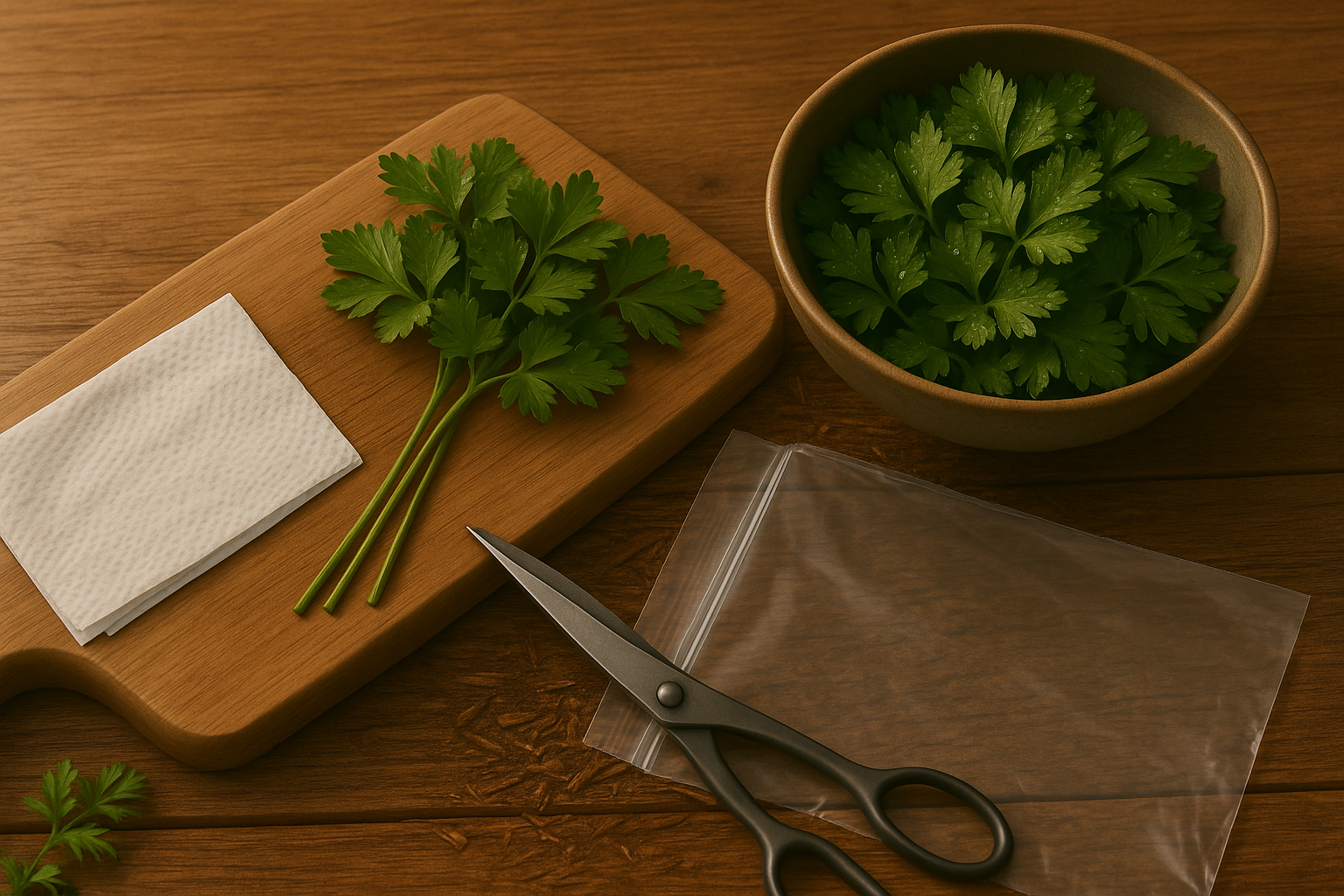
When parsley is ready to harvest—usually when the leaves look full and bushy, about 75–90 days after planting—use clean scissors to snip stems from the outer edges first, cutting about an inch above the soil. This encourages new growth in the center and keeps your plant productive for months.
After pruning, rinse the herbs to remove dirt or bugs, then gently pat them dry. For storing fresh parsley, wrap the stems loosely in a damp paper towel and place them inside a plastic bag or airtight container before putting them in the fridge’s crisper drawer. This method keeps parsley fresh for up to a week.
For longer-term storage, freezing is your best bet: simply chop washed parsley, spread it in a single layer on a baking sheet to freeze quickly, then transfer it to a zip-top bag for easy grab-and-use portions. You can also mix chopped parsley with olive oil, spoon the mixture into ice cube trays, and freeze for instant flavor bombs when cooking.
Fresh parsley brightens anything from omelets to salad dressings, while frozen parsley is perfect for tossing into soups, stews, or sauces—no need to thaw. By harvesting regularly and storing wisely, you’ll always have vibrant parsley on hand, encouraging you to grab a handful often, whether for garnish or to punch up the flavor in your favorite dishes.
